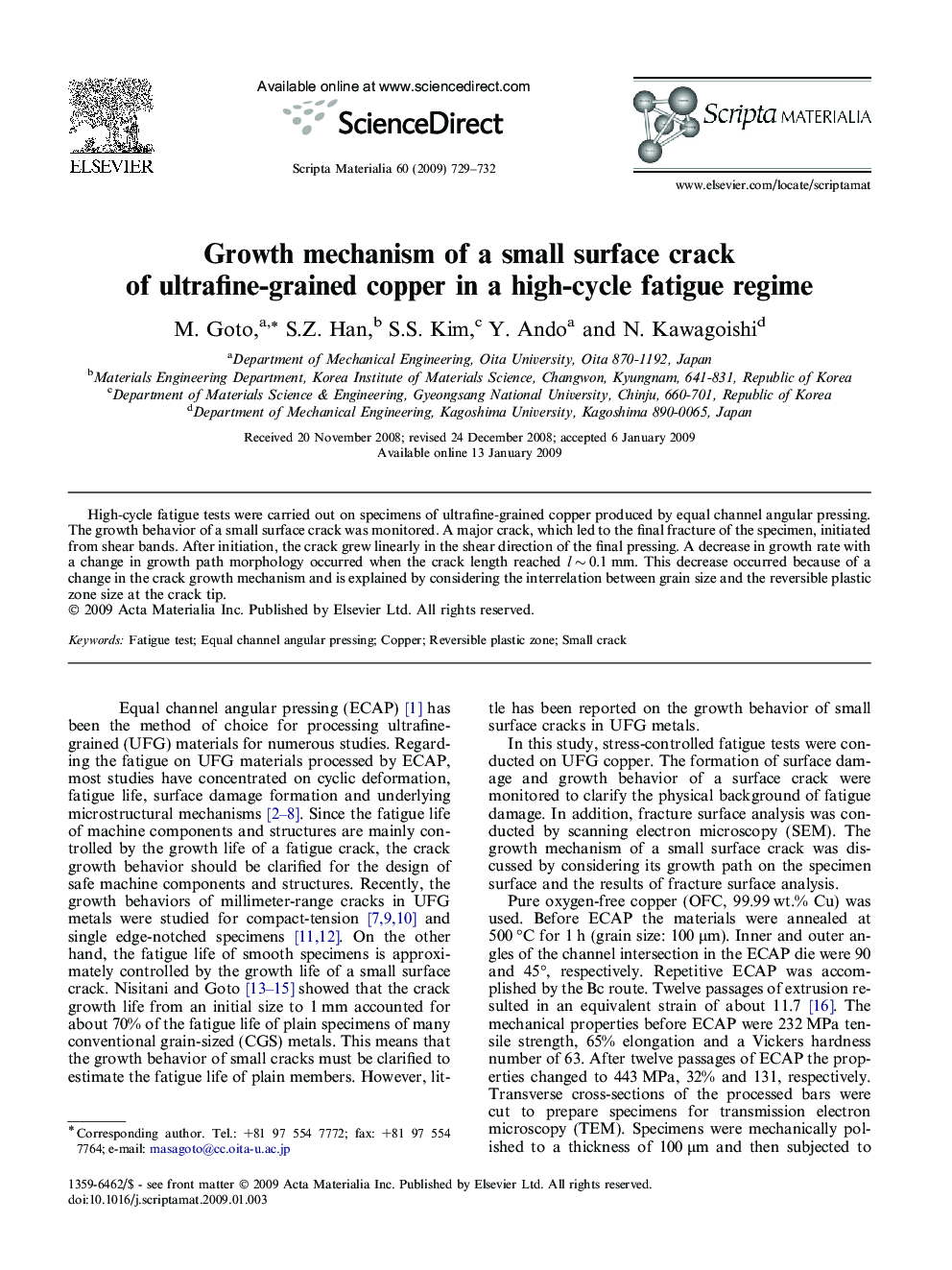| Article ID | Journal | Published Year | Pages | File Type |
|---|---|---|---|---|
| 1501862 | Scripta Materialia | 2009 | 4 Pages |
Abstract
High-cycle fatigue tests were carried out on specimens of ultrafine-grained copper produced by equal channel angular pressing. The growth behavior of a small surface crack was monitored. A major crack, which led to the final fracture of the specimen, initiated from shear bands. After initiation, the crack grew linearly in the shear direction of the final pressing. A decrease in growth rate with a change in growth path morphology occurred when the crack length reached l ∼ 0.1 mm. This decrease occurred because of a change in the crack growth mechanism and is explained by considering the interrelation between grain size and the reversible plastic zone size at the crack tip.
Related Topics
Physical Sciences and Engineering
Materials Science
Ceramics and Composites
Authors
M. Goto, S.Z. Han, S.S. Kim, Y. Ando, N. Kawagoishi,
